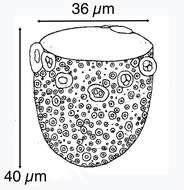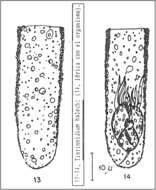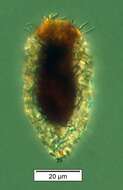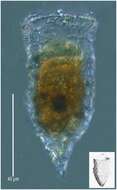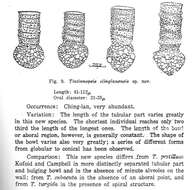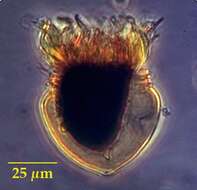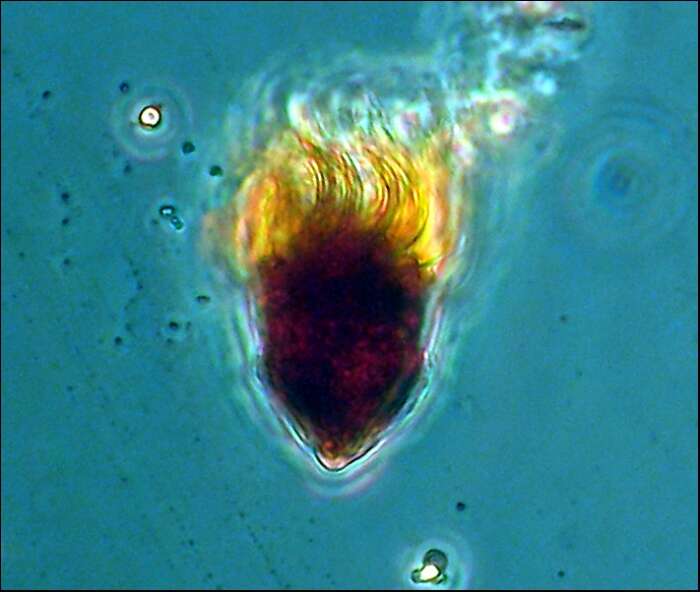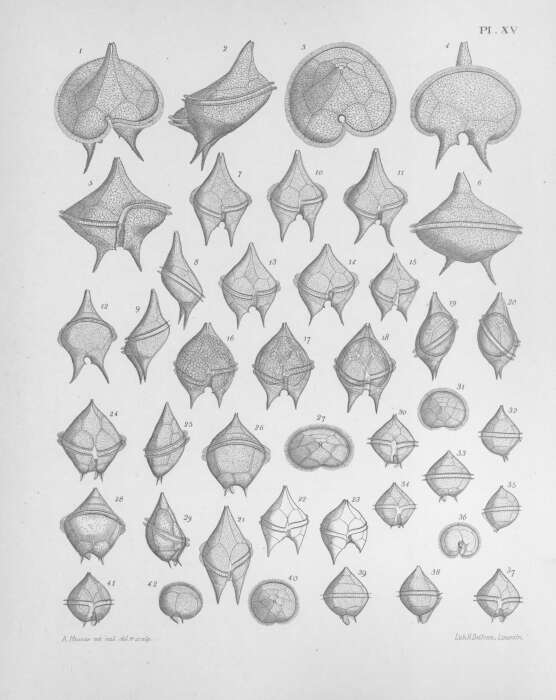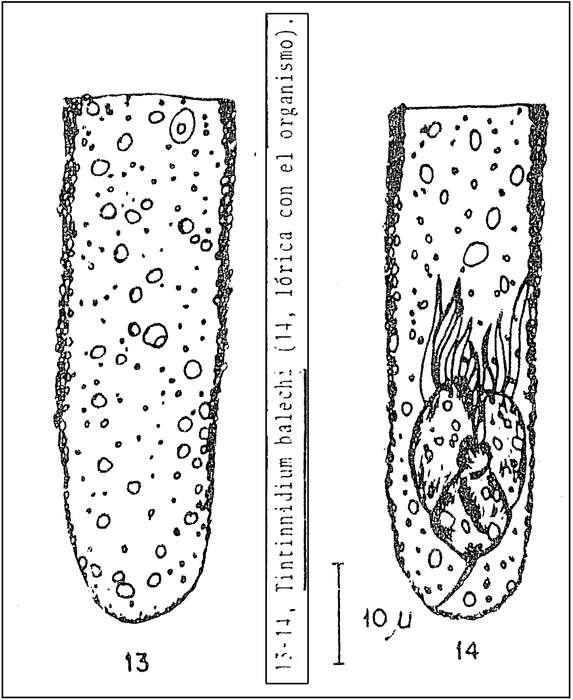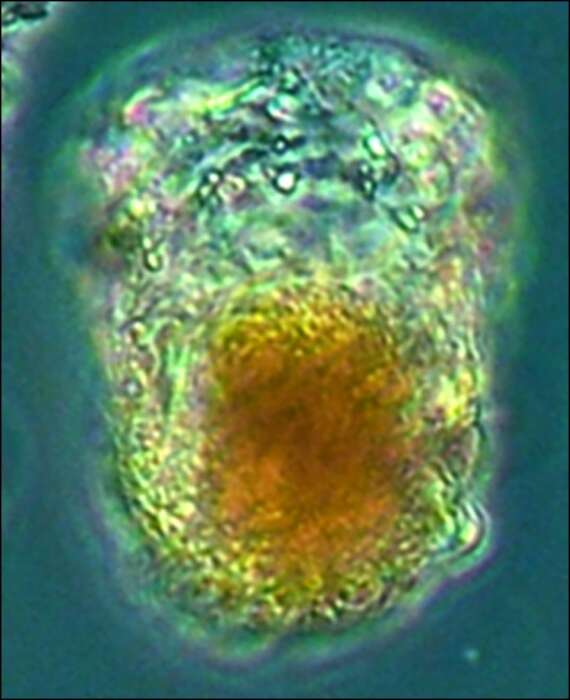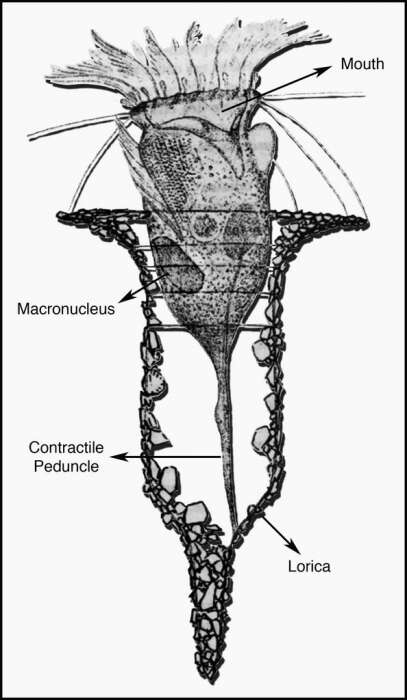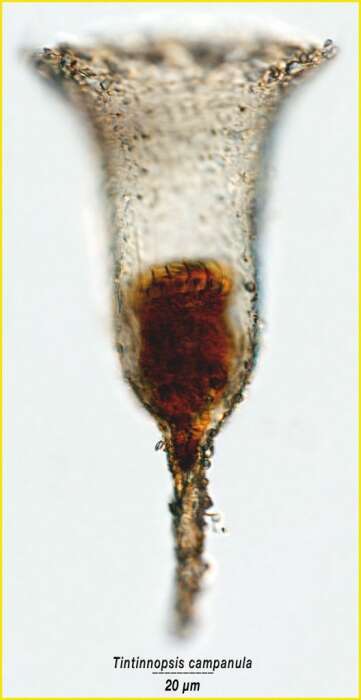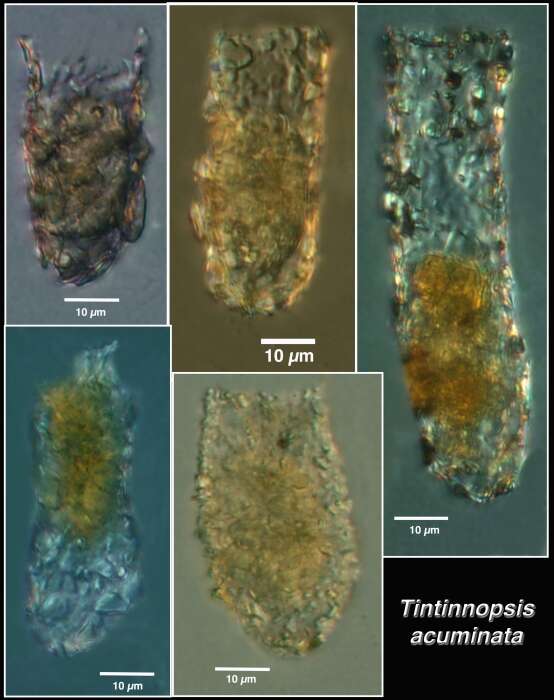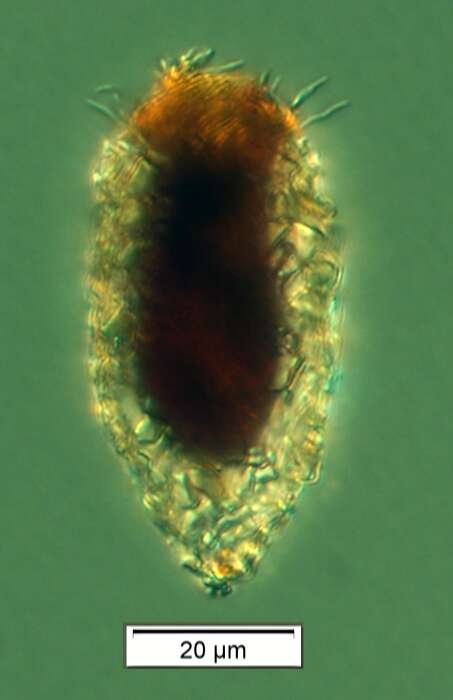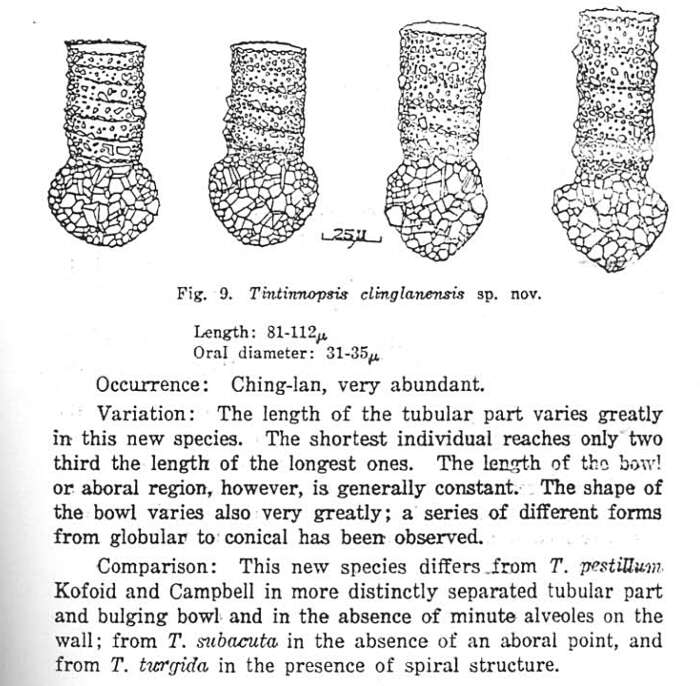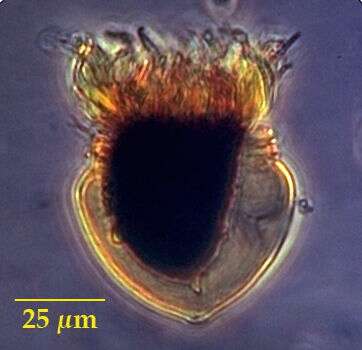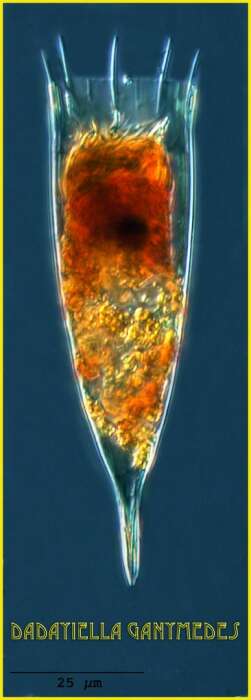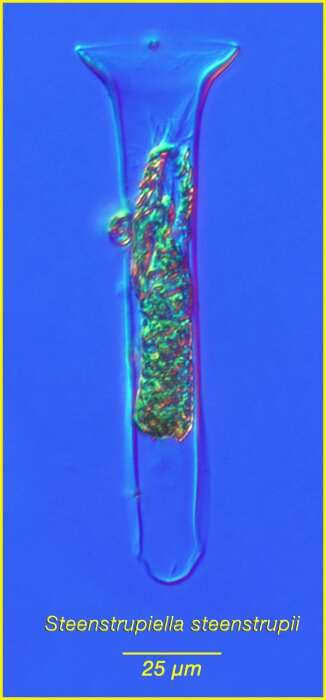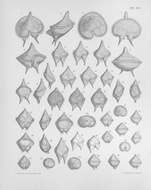-
Oligotrich ciliates are the most abundant group of the microzooplankton, feeders on microscopic algae in the plankton. This small (50 microns), very typical cell is probably a Strombidium.
-
Figure from the species description in Hada 1935; dimensions from text.
-
1 – 6. Peridinium divergens (http://www.marinespecies.org/aphia.php?p=taxdetails&id=109549) 7 – 23. Peridinium oceanicum (http://www.marinespecies.org/aphia.php?p=taxdetails&id=162782) (synoniem van Protoperidinium oceanicum (http://www.marinespecies.org/aphia.php?p=taxdetails&id=110240)) 24 – 29. Peridinium pallidum (http://www.marinespecies.org/aphia.php?p=taxdetails&id=162788) (synoniem van Protoperidinium pallidum (http://www.marinespecies.org/aphia.php?p=taxdetails&id=110244)) 30 – 42. Peridinium pellucidum (http://www.marinespecies.org/aphia.php?p=taxdetails&id=163849) (synoniem van Protoperidinium pellucidum (http://www.marinespecies.org/aphia.php?p=taxdetails&id=110245))
-
Figure 3 from plate 42 of Brandt 1907. Size bar from text description pg. 372.
-
From the South Pacific, Outpace Cruise Phytoplankton Net 18.
-
From the South Pacific, Outpace Cruise Phytoplankton Net 22.
-
Tintintinnidium balechi Barria de Cao 1981 - illustration from original description in Plate 3 of Barría de Cao M.S. 1981. Contribución al conocimiento de los Tintinnoineos (Ciliata, Protozoa) de la zona de Bahía Blanca. Contrib. Cient. Inst. Argentino Oceanogr. (IADO) 61, pp. 1-70.
-
This is a common ciliate of coastal waters. The shell or lorica obscures a good view of the ciliate cell (the brown matter). It is about 150 microns in total length.
-
From Fauré-Fremiet, E. 1924. Contributions à la connaissance des infusoires planktoniques. Bulletin Biologique de France de Belgique, 58, Supplément 6, 1-169.
-
Specimen from the Bay of Villefranche in Jan. 2011.
-
Daday's illustration of T. acuminata from Plate 19.
-
Specimens from the estuarine portion of the Ganges River, India. The species is characterized as having an aggolmerated lorica with a round-bottom, tube-shape having an opening diameter of about 18 microns. Such morphotypes are common in a very wide range of estuarine and coastal marine waters.
-
Specimen from the Chuchki Sea (Arctic). The species is characterized as having an aggolmerated lorica with a round-bottom, tube-shape having an opening diameter of about 18 microns. Such morphotypes are common in a very wide range of estuarine and coastal marine waters.
-
Illustration from original description in Daday 1887. Dimensions as given in text pg 553. Named for Salvatore Lo Bianco of the Naples Station
-
Specimen from the Chukchi Sea in 2016. Inset shows drawing from the species description by Meunier.
-
From page 50 of Nie & Cheng 1947 Note: mistake in figure legend - should read Tintinnopsis chinglanensis
-
Original illustration from Laackmann 1908
-
-
Dadayiella is genus of widespread species. Data shown are from Dolan, J.R., Pierce, R.W. 2013. Diversity and Distributions of Tintinnid Ciliates. in Biology and Ecology of Tintinnid Ciliates: Models for Marine Plankton, Dolan, J.R., Agatha, S., Coats, D.W., Montagnes, D.J.S., Stocker, D.K. (eds). Wiley-Blackwell, Oxford, pp 214-243.
-
-
Illustration from the original description of Dadayeilla ganymedes by Géza Entz Sr. in 1884. Micron bar based on the text description of the mouth diameter as 0.03 mm
-
Lugol's-fixed specimen from the California Current Ecosystem in the NE Pacific
-
The unbearable lightness of a tintinnid lorica. The ciliate cell is the brown cup-shaped body in the top third. This specimen is from the waters off Rapa Nui in the South West Pacific. The lorica is about 400 microns long.
-
Specimen from the Bay of Villefranche (43°41’10’’ N, 7°19’00’’ E) in Oct 2010, Lugol's-fixed.


